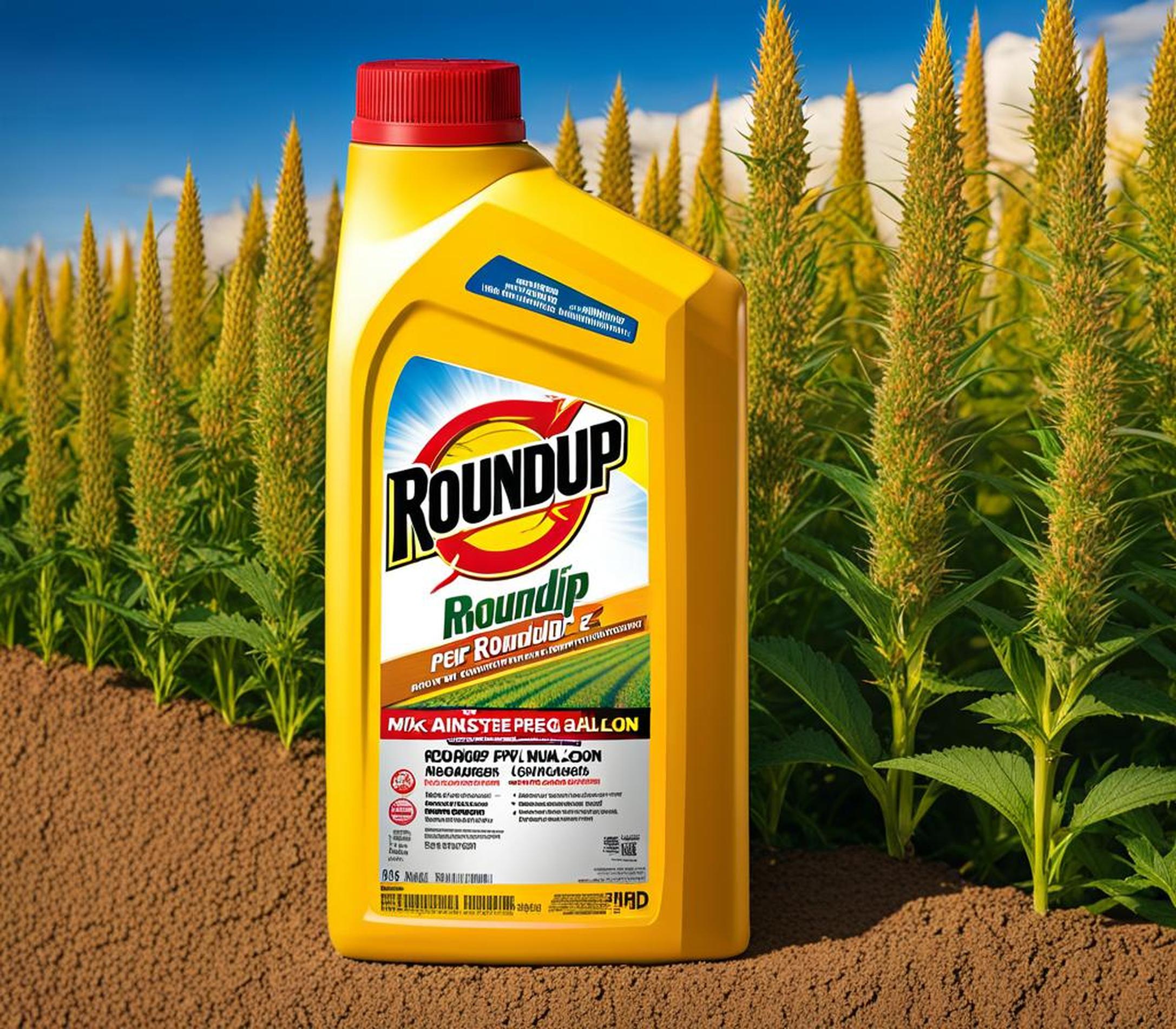For generations, homeowners have relied on Roundup to eliminate unwanted weeds from their lawns and gardens. But mixing Roundup properly is essential to maximize weed control and avoid wasting this popular herbicide. Use too little, and weeds survive. Use too much, and you risk harming desirable plants or contaminating groundwater.
Let’s start with the basics. Roundup contains the active ingredient glyphosate, which disrupts plant growth processes when absorbed through leaves and stems. Different Roundup products contain glyphosate in varying concentrations optimized for particular weed types. For light infestations, a dilute mixture is sufficient. Tough, established weeds require a more concentrated dose for total destruction.
Roundup Concentrate Types and Strengths
There are several Roundup concentrates available to tackle different weed problems:

- Roundup Weed & Grass Killer Concentrate Plus – for general weed control
- Roundup Pro Concentrate – for pre-emergent and post-emergent weeds
- Roundup Super Concentrate – for largescale agricultural and industrial use
- Roundup Poison Ivy Plus Tough Brush Killer Concentrate – for dense thickets and woody plants
Glyphosate content ranges from 18% in Roundup Weed & Grass Killer to as high as 50.2% in Roundup Super Concentrate. Always check the product label for the exact concentration.
Mixing Dilutions for Different Weeds
Small, Young Weeds
For newly sprouted weeds or light infestations, mix 3 ounces of Roundup Weed & Grass Killer Concentrate per gallon of water. The lower concentration eliminates delicate seedlings while avoiding unintended overapplication.
General Weed Control
When tackling established weeds across an entire lawn or garden, a standard dilution is 3-6 ounces per gallon of Roundup Weed & Grass Killer Concentrate. Start with 3 ounces for smaller weeds and increase up to 6 ounces for larger growth.
Tough Perennial Weeds
Hardy perennial weeds and grasses like dandelions and crabgrass need a stronger mixture of 6 ounces Roundup Weed & Grass Killer Concentrate per gallon of water. This higher concentration ensures translocation to the weed roots for complete eradication.
Seeding and New Lawns
When applying Roundup as a pre-emergent herbicide before seeding or around new grass, use a low concentration of just 2/3 ounce Roundup Pro Concentrate per gallon of water. This prevents harming tender grass seedlings.
Large Areas and Acreage
For large agricultural fields and pastures, Roundup Super Concentrate allows economical spraying with up to 44 gallons of diluted mix per acre. Concentrations range from 7.5-12.5 ounces per gallon depending on weed density.
Step-By-Step Mixing Directions
Mixing Roundup properly ensures you apply the right amount for your situation:
- Calculate the total gallons of spray mix required for the area and weed type based on recommended dilutions above.
- Measure the required amount of Roundup concentrate into a mixing container using a measuring cup.
- Add appropriate amount of water and stir thoroughly until blended.
- Transfer diluted mix to the spray tank, rinse the mixing container and apply.
Always use clean water and mix in a dedicated container. Contamination can render Roundup ineffective. Carefully measure concentrate each time for consistent results.
While an effective weed killer, some precautions protect your health when using Roundup:
- Wear goggles, gloves, long sleeves and pants when mixing and spraying.
- Avoid spraying on windy days to prevent drift.
- Keep children and pets away from treated areas until dry.
- Properly rinse spray equipment and dispose of rinsate.
Glyphosate has been classified as a probable carcinogen by the WHO, so minimize exposure. Homemade remedies like vinegar or boiling water are safer alternatives for spot weed control.
You can eliminate weeds with the proper concentrate to water ratio. Accurately measuring and mixing allows selective weed control with minimal product waste or environmental impact. Just be sure to take safety precautions when handling this powerful herbicide.
